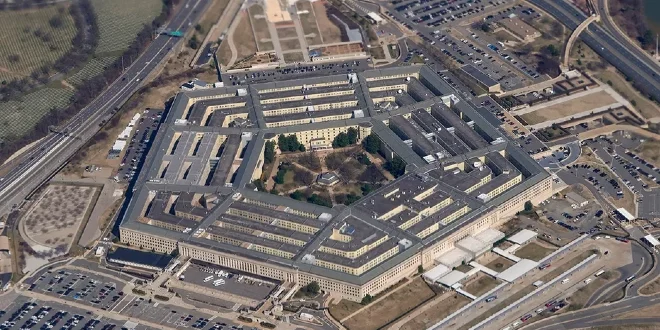In response to ongoing tensions in the Middle East, U.S. Defense Secretary Lloyd Austin has extended the deployment of the USS Gerald R. Ford, the Navy’s newest aircraft carrier, along with the USS Normandy cruiser. This decision marks the third extension for the Ford’s deployment, reflecting the U.S.’s concerns over the volatile situation in Gaza amidst Israel’s conflict with Hamas.
The U.S. is maintaining a rare two-carrier presence in the region, with both the Ford and another carrier stationed near Israel. The presence of two carriers in the area is a strategic move, not often seen in recent times. The extension of the Ford and the Normandy’s deployment was confirmed by several U.S. officials, who spoke on the condition of anonymity as the information hadn’t been publicly disclosed.
The heightened military presence follows Hamas’ attacks on October 7, which prompted fears of the conflict expanding into a wider regional war. The U.S. has been actively involved in intercepting attacks in the region, including missile and drone strikes by Iranian-backed militants in Iraq and Syria, and Houthi rebels in Yemen.
Currently, there are 19 U.S. warships in the region, including seven in the eastern Mediterranean and others distributed through the Red Sea, Arabian Sea, and the Persian Gulf. The Ford and its accompanying strike group were directed to the eastern Mediterranean on October 8, a day after Hamas’ attack.
This extension comes as Israeli Defense Minister Yoav Gallant predicts a lengthy conflict with Hamas. U.S. National Security Adviser Jake Sullivan has discussed plans to de-escalate major combat operations in Gaza with Israeli leaders, but they remain committed to their campaign against Hamas.
The Ford’s crew, approximately 5,000 sailors, faces uncertainty regarding their return home for the holidays. Initially scheduled to return by early November, the ship had left Norfolk, Virginia, in early May.
The original plan was for the USS Dwight D. Eisenhower carrier strike group to replace the Ford. However, the Pentagon, as announced by spokesperson Sabrina Singh, decided to keep both the Eisenhower and Ford in the region, extending from southern Europe to the Middle East.
American aircraft carriers like the Ford are considered key deterrents against various regional threats, including Iran and Houthi attacks. The Ford is set to remain in the area for several more weeks.
Complementing the Ford and Eisenhower are several other U.S. naval vessels, including the USS Philippine Sea, a cruiser, and destroyers like the USS Carney, USS Stethem, and USS Mason. These ships are active in patrolling and deterring attacks, particularly around the strategic Bab el-Mandeb Strait.
This sustained U.S. naval presence, including two aircraft carriers, marks a shift from the recent focus on the Asia Pacific back to the Middle East, reminiscent of the height of the Iraq and Afghanistan wars.


